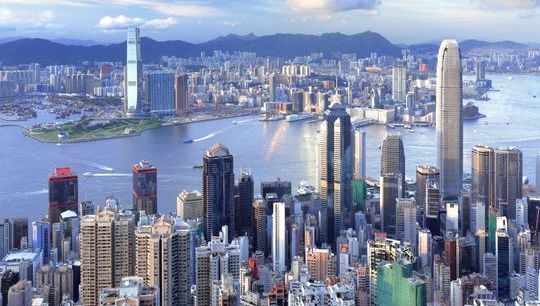General observations on activism, economics and the macroeconomic environment
By Michael Oliver Weinberg, CFA Senior Managing Director Chief Investment Strategist, Protégé Partners
Published: 14 October 2016
We would like to share some of our general observations on activism, economics and the macro environment.
Activism - The prevalent strategies
Activism 101
Shareholder activism has become a prevalent strategy in the hedge fund world. Academic studies, such as the one by Professor Wei Jiang, et al., at Columbia Business School, have demonstrated that activism generates improved operating performance.1 Activists have a gamut of tools, ranging from financial engineering, such as share repurchases and dividends, to corporate reorganization, such as divestitures, mergers and acquisitions. Activists are typically hedge fund or long-only managers who are inherently well skilled in finance and financial markets. It is therefore not surprising for them to recommend the aforementioned strategies. That said, activists also do recommend operational improvements.
Activism - The less prevalent strategies
Production Capacity
However, based on the studies we have analyzed2, as well as our empirical observations, it is rare for activists to recommend expanding production. This begs the question why the skew toward recommending trimming production and not expanding manufacturing production. According to the U.S. Bureau of Economic Analysis, between the 1950s and today domestic manufacturing production has declined from a peak of approximately 27% of GDP to a fraction of that level.3 This is not likely surprising to anyone. China and other lower cost foreign producers have gained share at the expense of the relatively higher cost United States.
Research and Development
Similarly, we rarely see activists espouse increasing research and development (R&D). In fact, often activists recommend the polar opposite, trimming research and development. For example, within the healthcare sector, we’ve observed a recent trend over the past few years has been for companies to aggressively roll-up other companies, and as part of the cost savings dramatically cut research and development. Until this past summer, these stocks had become prevalent longs among activists and growth stock investors.4
Research and Development
R&D 1.0
Gone from what we will refer to as traditional companies (that is, those that have been around for decades) are laboratories such as that which was part of Bell Labs. Scientists could research what they thought was most interesting, irrespective of immediate commercial applicability. Despite the indifference to immediate profit from their research, many great technological innovations as well as scientific innovations came from Bell Labs and other similar ones. We do not believe thoughtful R&D is entirely gone, rather we believe it has shifted to a different set of companies, which we will now highlight.
R&D 2.0
We believe R&D and innovation has shifted from traditional corporate America to Silicon Valley. The modern day equivalent of Bell Labs is Google and similar companies, where researchers, scientists and technologists may have carte blanche to work on whatever they believe is most interesting, irrespective of near-term commercial viability. For example, Google developed a self-driving car long before the Big 3 auto companies.5 Similarly, Tesla recently commercialized electric cars before the Big 3 auto companies.6 Uber commercialized the use of the internet to hail cars, not the taxi companies that will possibly go out of business because of it. Airbnb commercialized the technology to rent individuals homes out by the night, not any of the established real estate or lodging companies.
For those readers that are non-millennials, as this author is, do you remember the Sony Walkman? The iPod should have been a logical invention and extension of Sony's Walkman from decades ago. But it wasn't. It was created by Apple. Sony is of course a traditional Japanese company, rather than a traditional American company, but the analog still holds and the list of technologies invented by Silicon Valley goes on and on.
R&D 2.0 is not irrational for corporate America
We believe that Silicon Valley is American R&D 2.0 and our center of innovation. Traditional corporate America at best plays catch-up. Is this irrational? Not necessarily. Corporate finance theory 101 theorizes that mature companies are best returning cash to shareholders in the form of dividend or share repurchases.7 This is exactly what is happening. Corporate America is spending record amounts on share repurchases. R&D is similarly at or near record lows in traditional corporate America.8 Yet funding of venture capital is near record highs previously achieved during the first technology, media and telecommunication bubble in the late '90s.9 We believe just as contract manufacturers out-source production of electronic equipment for asset light intellectual property companies, Silicon Valley has essentially out-sourced innovation and R&D from traditional companies.
Productivity
To achieve real economic growth, economies need increases in productivity. Productivity growth has decelerated dramatically over the last few years.10 In fact, Larry Summers and Ben Bernanke, were in a very public debate over whether this was secular stagnation as alleged by Summers.11 Though we don't have an answer to this, we believe a study that quantified the aforementioned discussion, on R&D spent by Silicon Valley and traditional corporate America, would potentially provide an insightful answer, though we have not yet seen such a study. In any case, we will leave that for a subsequent discussion. At this time, we will just assume the activity has shifted from one constituency to another. In terms of the two constituencies’ future, we will opine that it bodes well for that of Silicon Valley and poorly for traditional corporate America, as the former is likely to grow and the latter is likely to contract.
Global Labor Force
The impact of the internet
The trend toward relatively inexpensive manufacturing, discussed previously, and labor abroad has been prevalent for decades. However, more recent technology and the internet have expanded the developed world’s access to inexpensive service labor in addition to the previous access to manufacturing labor. For example, with modern telecommunications, video and the internet, the western world's service sector labor force has expanded dramatically.
Examples
Indian information technology outsourcing and Mexican call centers are well known examples. However, we believe this is just the beginning of this trend. Medicine and other professional services are and will continue to experience similar trends. For example, a radiologist in relatively low-cost Asia, may read an x-ray from a patient in relatively high cost New York City via the internet and send the conclusion via the internet. Similar outcomes may be possible for other professional services such as finance, law, marketing, etc.
Employment
The question one should ask is what impact the expansion of the developing world service sector labor force has on the developed world labor force. We believe the answer is increased competition and supply, at lower prices. The implication is diminished demand for developed world labor and disinflationary, if not deflationary pricing on developed world labor. We believe this is one of the contributing factors to the underemployment rate in the United States since the global financial crisis. Moreover, we fear this trend will only get worse over time. That said, we do believe a solution to diminish this trend is labor force re-education. Those whose skills have become obsolete need to be re-trained with skills that are currently in demand.
China's four excesses
1) - Production
In recent decades, China has built massive production and capacity. If one looks at its foreign direct investment (FDI) as a percentage of GDP it is a record versus other emerging markets over past decades.12 We are subscribers to George Soros's boom/bust theory: historically, when these other economies reached high FDI to GDP ratios but still below that of China's current ratio, the countries experienced 'busts' that followed what were typically investment driven 'booms.'13 Somewhat ironically, China has become a relatively higher cost manufacturer compared to other Southeast Asian economies. These economies therefore also provide global production capacity.
2) - Infrastructure
We believe that excessive infrastructure is included in China’s FDI. The different layers of government, state owned enterprises (SOEs) and other entities have all contributed to this excess which drove employment and economic growth.14 We believe there are likely airports, roads, ports and other similar infrastructure with excess capacity that is not likely to be utilized any time soon.
3) - Resources
In recent times, Chinese sovereign wealth funds and SOEs have spent record amounts in both dollar terms and valuations to secure resources.15 Such resources include iron ore, coal, crude oil and natural gas. For example, these Chinese entities made massive purchases of crude when the price of oil was $100 per barrel and above.16 Currently crude is approximately $30 per barrel. We believe the same phenomenon holds for the other aforementioned commodities and many not mentioned here.
4) - Real Estate
The fourth component of China's excess is likely real estate. There has been massive speculative activity in Chinese real estate during the economic boom.17 It is not uncommon for Chinese citizens to own multiple homes or apartments, many of which sit vacant and are not rented.18 Contrasted with cities like New York or San Francisco there are relatively few if any zoning requirements in Chinese cities.19 Supply is therefore much more easily able to out-strip demand. This is particularly the case in non-Tier 1 cities, but also the case in Tier 1 cities, such as Beijing and Shanghai. We believe this excess supply includes retail, residential, office and other commercial space. Jim Chanos, a well-known hedge fund portfolio manager, has written about ghost cities, where massive cities have been build and there are no tenants or owners. As previously stated there is infrastructure that goes to and supports these cities that we believe is superfluous.
Two analogs for China
1) - Japan in 1989
We believe China is akin to Japan in 1989. Japan saw its post-war economic boom and its stock market the Nikkei peak in that year.20 Globally, and particularly in America in the years leading up to and in 1989 there was a perception that Japan was going to become a world economic power, if not the dominant world economic power. The Japanese were using their wealth to buy what were then the world's most expensive impressionist paintings, prestigious golf courses, the world's most desirable real estate (such as Rockefeller Center) and similar risk-seeking assets.21
Recently, there has been a similar perception of China to Japan when it was at its peak. For example, in the top New York City schools, Chinese has been added to what were previously exclusively Romance languages. Chinese investors bought the Waldorf Astoria hotel, though not Rockefeller Center as the Japanese once had, just a few blocks away at a record price per room.22 Chinese Art has achieved record price levels, and Chinese bidders have bid many Western works up to record levels.23 Similarly, Chinese high end consumers have bid top Bordeaux, Burgundy and Cult California wines up to record levels. For contrast, in the late ‘80s Japanese corporate buyers bought vineyards in Bordeaux.24
2) - The sub-prime crisis in the US
The U.S. subprime crisis was a primary driver of the global financial crisis. At the risk of oversimplifying it, this crisis was driven by bad loans that funded purchases of overvalued (or what would become overvalued) real estate. Per our earlier commentary that we believe China is experiencing real estate excesses, we believe that this has partially been financed with debt. We believe debt has also funded the excessive infrastructure, resources and manufacturing capacity that we believe is pervasive. In addition, as the U.S. had its share of frauds unearthed during the global financial crisis, we believe China too will soon have its share. We believe that a significant percentage of this bad debt resides in wealth management products (WMPs) that are relatively unregulated and opaque. Moreover, these products are often rolled-over, which is akin to 'lend and extend.25 Were investors to demand their principal back, we believe in many instances this would be impossible and there would be substantial impairment.
Summary
We admittedly have very peripherally traversed quite a bit of ground, including general observations on activism, economics and the macroeconomic environment. We believe many of these themes and trends will persist over a long period. Similarly, they will impact the investment landscape and opportunity set. We hope you found this to be interesting and thought provoking.
Michael Weinberg is a Member of the AIMA Council
Footnotes
[2] See for example Martijn Cremers, K.J., E. Giambona, S. Sepe, and Y. Wang (2015): ‘Hedge fund activism and long-term firm value’
[4] https://www.lw.com/upload/pubContent/_pdf/pub4723_1.pdf
[6] http://europe.newsweek.com/bob-lutz-man-who-revived-electric-car-94987?rm=eu
[7] Pratap G. Subramanyam (2008): ‘Investment Banking: Concepts, Analyses and Cases’. McGraw Hill
[9] http://247wallst.com/investing/2015/10/14/venture-capital-investments-at-record-high/
[10] http://www.bls.gov/lpc/prodybar.htm
[11] http://www.brookings.edu/blogs/ben-bernanke/posts/2015/04/01-larry-summers-response
[12] http://data.worldbank.org/indicator/BX.KLT.DINV.WD.GD.ZS
[13] https://www.caseyresearch.com/articles/23-investing-lessons-from-george-soros
[14] http://www.uscc.gov/sites/default/files/Research/10_26_11_CapitalTradeSOEStudy.pdf
[17] http://www.nytimes.com/2009/11/29/business/economy/29view.html
[19] http://esdac.jrc.ec.europa.eu/InternationalCooperation/SEPLS/SEPLS_Brussels2013/09-Wang-LUZoning.pdf
[22] http://www.reuters.com/article/us-usa-property-chinese-investment-idUSKBN0LF2IF20150211







